SEO Content Writing Guide 2023: Best Practices for Higher Rankings

Remember the classic children’s game, “Where’s Waldo?” The elusive character clad in red-and-white stripes hidden amongst a sea of distractions?
Finding Waldo in a bustling beach scene or a packed carnival always seemed like an insurmountable task. Yet, the allure of the challenge kept us searching, page after page.
We’re all playing a somewhat similar game today, only instead of Waldo, we’re trying to find your content. How can you ensure your content isn’t just another face in the crowd? How can you boost your search engine result page (SERP) rankings? And, most importantly, how can you engage your target audience?
Just like every child had their own unique strategies for finding Waldo (starting from the corners, looking near peculiar objects, or simply scouring the page meticulously), SEO content writing has its playbook too. And we’re about to unlock these strategies for you.
Stay with us as we help you transform run-of-the-mill content that fails to rank into star-studded content ranks, engages, and converts. We’ll also help you understand how you can make the most of Search Berg’s SEO content writing services. It’s go time!
1. Understand Your Audience
Casting a wide SEO content writing net may sound like an effective strategy at first. After all, the digital world is as vast as can be, isn’t it? In actuality, this approach results in diluted efforts and lackluster results.
If you want to boost your rankings and genuinely engage with your visitors, understand and target them with precision. This is where we enter the realm of persona-driven content.
1.1. What is Persona-Driven Content?
Persona-driven content is tailored content that resonates with specific profiles or “personas” (representing your target audience). Instead of general content that appeals to a broad audience, persona-driven content aims to connect more deeply with specific audience segments by addressing their particular needs, challenges, values, and behaviors.
In 2023, general content doesn’t rank. It’s that simple. Google doesn’t want to fetch a bunch of generic, non-specific, run-of-the-mill search results to web users.
Think about it. If you wake up with severe back pain one day, would you head to just any other doctor or an orthopedic specialist? This is how the Googleverse operates. Specificity and specialization win the race. And we know that now more than ever, thanks to Google’s strict E-E-A-T quality rater guidelines that stand for experience, expertise, authoritativeness, and trustworthiness.
Think of your persona as a fictional but data-driven representation of a segment of your audience. These personas are crafted by SEO content writing service providers based on a blend of research, analytics, and sometimes even real customer interviews. Each persona typically includes demographic data, psychographic characteristics, and online behaviors.
Let’s consider the example of a company that sells skincare products. Their goal is simple: they want to create SEO content that helps them rank on Google SERPs. Instead of launching one-size-fits-all content, they get specific. The company doesn’t just target everyone interested in skincare; they create several distinct personas.
Here are a few:
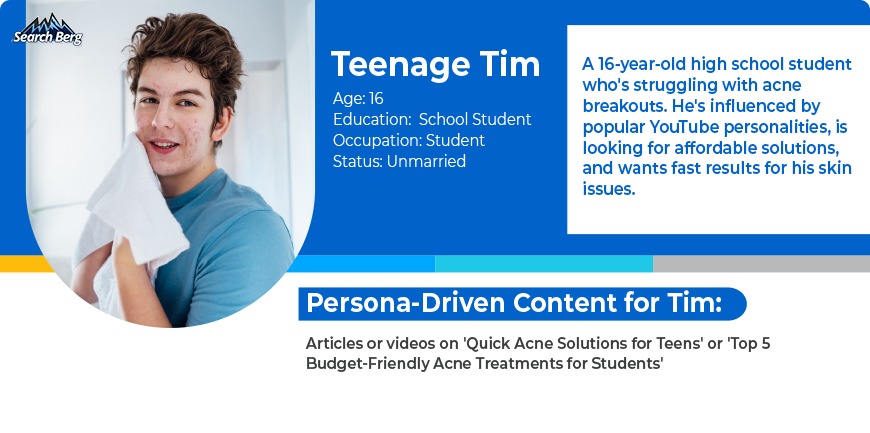


Persona-driven content feeds two birds with one scone. It truly resonates with readers and, as a result, tells search engines that you’re fulfilling audience demand.
There’s nothing Google wants more than audience satisfaction. If web users are happy with the results Google delivers, well, that’s a job well done.
As a business owner, your goal is to make Google’s job easier by crafting personalized, specific, high-quality content. And that’s exactly what the persona-driven SEO content writing approach helps you do.
1.2. How to Craft Your Personas
Crafting well-defined, actionable personas isn’t just a task; it’s an art form interwoven with a hint of science. It’s about blending observed data with intuitive understanding, capturing the essence of distinct audience segments, and delivering what’s requested.
Instead of shooting in the dark, you’ll take accurate, well-defined shots that help you win the game. Here’s a more detailed breakdown of how to meticulously craft these vital avatars:

The goal of this comprehensive process is to humanize data. By the time you’ve crafted your personas, they should feel almost like real individuals you know and understand.
Once you have these detailed sketches in hand, you’ll be able to craft content that effectively reaches, engages, and resonates with your target audience. And this is where higher rankings will start flowing.
2. Quality Over Quantity: Depth Matters
In the early days of SEO, a common strategy was to churn out a high volume of content, sprinkle in relevant keywords, and hope to capture as many eyeballs as possible. In 2023, this strategy won’t get you anywhere.
The adage “quality over quantity” isn’t just tossed around for fun; it rings true across every inch of the SEO content writing landscape.
When we talk about “depth,” we’re not just referring to word count but the value, comprehensiveness, and authority the content brings to the table. It’s about addressing a topic holistically, covering various angles, answering potential questions, and providing actionable insights or solutions.
When you provide deep, valuable insights on a subject, readers and search engines recognize you as a thought leader in that domain.
It comes as no surprise that some of the biggest names associated with Google keep emphasizing the importance of quality time and time and time again. According to Google Search Advocate John Mueller:
Reading through some of your posts, I’d strongly recommend first making sure that your content is of high quality, unique (not spun/rewritten/generated), and compelling.
— John has updated his unnamed profile name #stapler (@JohnMu) February 11, 2022
As we discussed earlier, Google’s E-E-A-T quality rater guidelines have also shifted the content landscape dramatically. If there were ever any doubts about the importance of creating high-quality content, they’ve been put to rest once and for all.
If you want to claim the top Google SERP rankings, put the gimmicks aside, and rework your quality. Creating in-depth, quality content isn’t just about padding an article with more words or fluff. It’s an art that requires a good understanding of the subject, comprehensive research, and the provision of rich information that provides real value to readers.
How can you master this art? Ensure your SEO content writers use a similar content creation process:
2.1. Topic Research
Standing out starts with choosing the right topic. Comprehensive topic research ensures your content isn’t just a drop in the bucket but a beacon of value.
Start by identifying gaps in the current discourse. What are people looking for? Which questions are they asking? What remains insufficiently discussed?
Work with a team of professional SEO content writers who understand the importance of topic research and perform it thoroughly. They should research popular queries and emerging trends. From there, their research should expand to scholarly databases, industry forms, and expert interviews.
2.2. Competitor Research
Knowledge of one’s adversaries is half the victory, and in the content realm, this rings especially true. Competitor research isn’t about mimicking others but understanding the landscape.
At this stage, your SEO content writing team should analyze top-performing content in your niche and look for patterns. Which topics are frequently covered? What’s the typical content length? Which keywords are they targeting?
Identifying these elements will help you uncover areas of improvement. The goal isn’t to produce content that’s just on par with competitors. Instead, offer distinctly superior content that compels readers to choose your page over others.
When you look for SEO writers for hire, be very careful. If they don’t tackle the two most critical steps of the process (i.e., topic and competitive research), you may want to keep looking.
Settling for a fair-to-middling SEO content writing service is one of the most critical mistakes you could make. Do the due diligence of inquiring into the agency’s content creation process to ensure they aim for quality, not quantity.
Recommended: Search Berg’s SEO Competitor Analysis Services
2.3. Craft an Outline
Before diving into writing, you must create a roadmap. Outlining streamlines the content creation process; it ensures logical flow and coherence.
Start with a captivating introduction. Follow it with the main content sections, where you dive deep into specific facets of the topic. By breaking your content into digestible chunks, you’ll cater to readers’ decreasing attention spans and guide them smoothly through the narrative.
An outline also ensures you cover every vital point. This is a great way to establish your piece as comprehensive and thorough (attributes Google algorithms love).
2.4. Originality and Authenticity
Your target audience is equipped with a discerning eye; they can quickly spot recycled or inauthentic content. Prioritize sharing unique insights, personal experiences, or new angles on familiar topics. This fresh perspective will differentiate your content; it’ll make it memorable and share-worthy.
All data (quotes, insights from other sources, etc.) must be accurately credited. This is also a great way to fortify your content’s trustworthiness. You can’t rank high on Google without winning your audience’s trust and loyalty. Keep that in mind.
2.5. Structured Formatting
A wall of text can be off-putting, whereas content broken into digestible chunks invites readers in. Utilize headings and subheadings to categorize information, use bullet points for lists, and intersperse with images or infographics where relevant.
White space is your friend; it allows your content to breathe and guides the reader’s eyes effortlessly down the page. Use proper formatting to increase readability, keep readers engaged longer, and, consequently, increase your chances of claiming the top Google SERPs.
3. Optimize for Featured Snippets
The digital rat race for that coveted top spot has taken a fascinating turn with the introduction of featured snippets. Often known as “position zero,” featured snippets are concise answers to user queries; they’re prominently displayed above traditional search results.
Here’s an example:
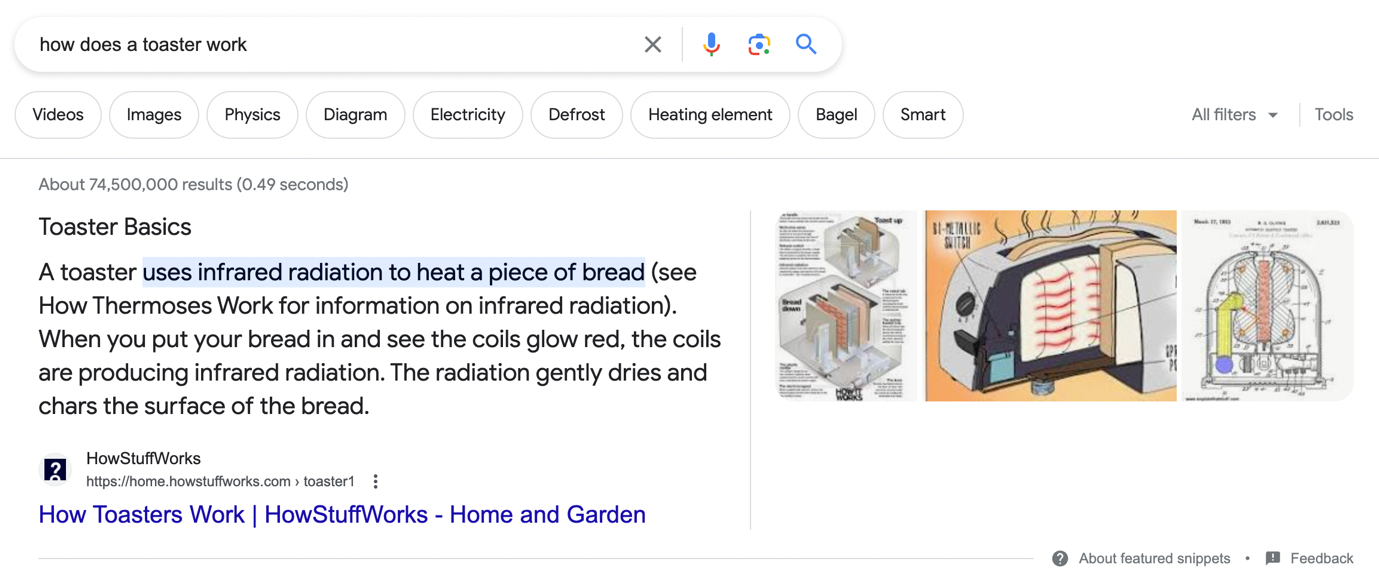
Featured snippets come in various flavors: paragraphs, lists, tables, and even video clips. If you make it to this little regal box, you’ve made it. Since this is the first thing people see when they run a Google search, they’re very likely to read the snippet itself (usually all the way through) and open the page without scrolling down to explore other pages.
Achieving this prime real estate comes with major bragging rights. The best one of all? Stellar visibility and dramatically high click-through rates (CTRs). If your SEO content writing service plan isn’t structured with a focus on featured snippets, you have a lot of work to do.
Start by identifying common questions users ask frequently in your industry or niche. By addressing these questions directly, you’re more likely to provide the type of information that Google seeks for featured snippets.
These questions often begin with words like “how,” “what,” “why,” and “when”. These phrases signal a user’s intent to seek a quick and informative answer.
Let’s consider some examples.
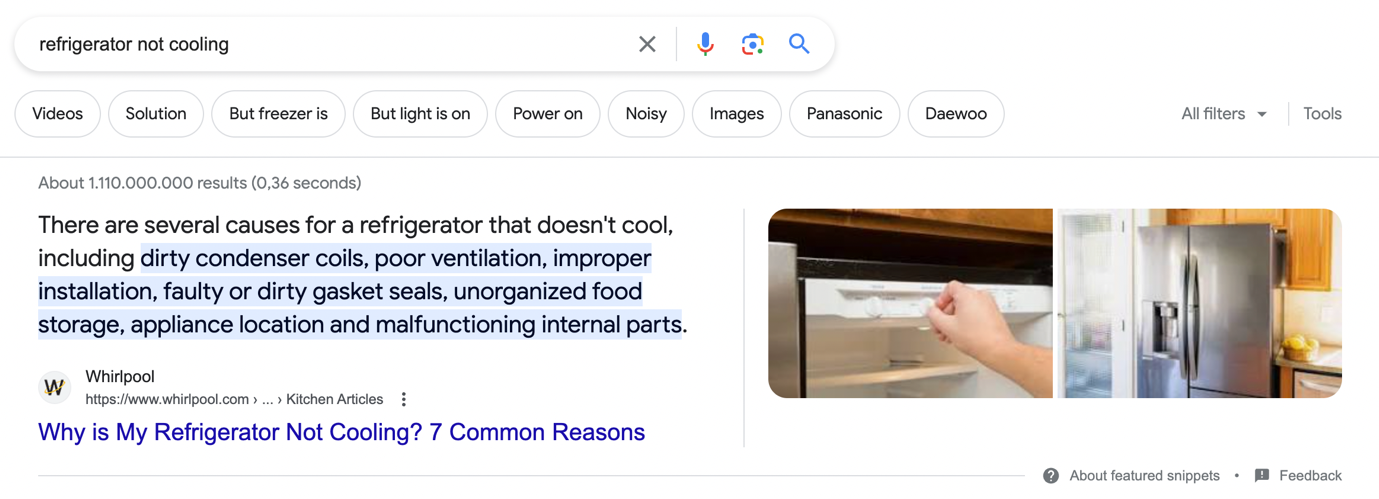
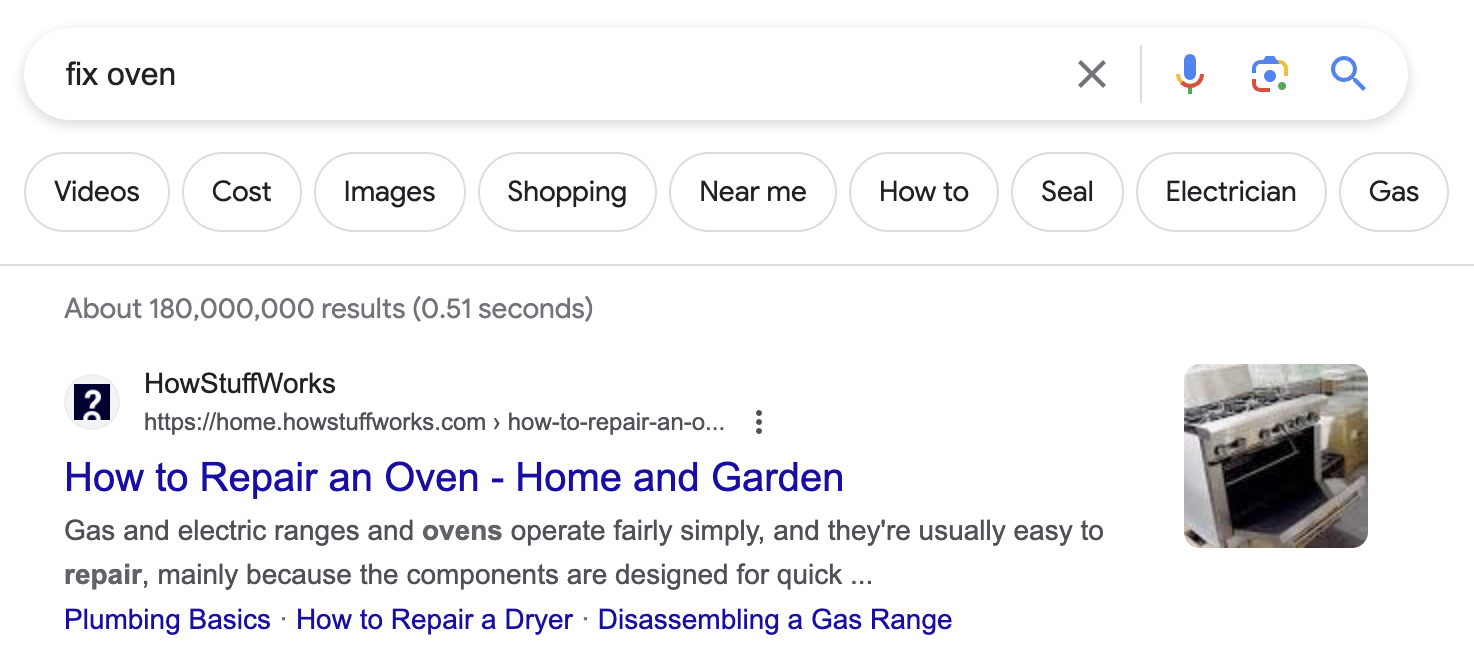
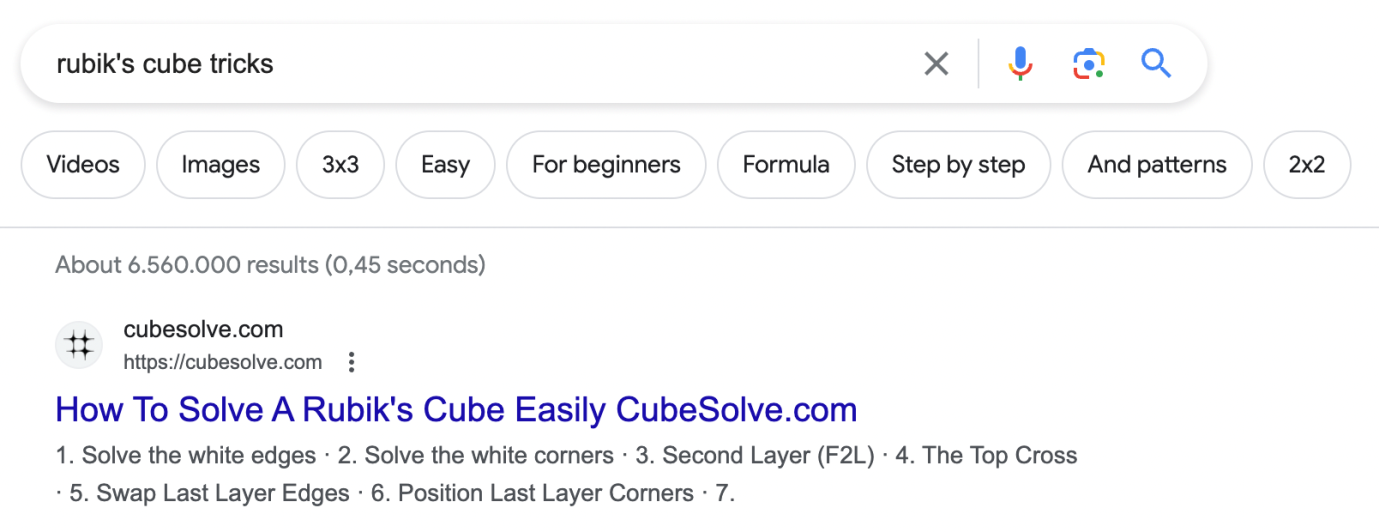
Notice something interesting? Each of the title tags in these featured snippets starts with “how,” “what,” “why,” or “when” (even though the search queries didn’t include these phrases). These types of topics lend themselves well to step-by-step instructions, explanations of cause-and-effect relationships, and detailed answers.
Complex queries that require a detailed explanation or the breakdown of intricate concepts are also well-suited for featured snippets. When users seek answers to complex questions, Google aims to provide quick and concise responses that offer clarity and understanding.
Comparisons and contrasts are another angle to consider. Topics that involve comparing products, services, or ideas can appear in featured snippets in the form of tables, charts, or bullet point lists that capture people’s attention with easily digestible content.
Like most things with Google, the landscape is continually evolving. Today’s strategies may be obsolete tomorrow. Closely monitor content pieces that are getting featured. Understand why they’re appearing in Google’s featured snippets and try to replicate that success.
Keep abreast of Google’s algorithm updates to gain insights into changing preferences or criteria for featured snippets. You can also request these insights from your SEO content writers.
Recommended Read: What is Google’s Local 3-Pack and How Can You Use It to Rank?
4. On-Page SEO
As the diligent powerhouse behind your website’s visibility and user experience, on-page SEO is the nuts and bolts that holds your digital strategy together. It’s the practice of optimizing individual webpages to improve their visibility and SERP rankings.
You can’t get far without optimizing your content; it’s that simple. You may produce fresh, engaging, insightful, unique, and witty content, but it won’t make it to Google unless you infuse it with the right keywords, title tags, meta descriptions, header tags, linking juice, and so much more.
Sounds complex?
Let’s break it all down into bite-sized pieces.
4.1. Keywords

Keywords. These seemingly ordinary strings of words are the very linchpins that can make or break your content’s visibility in the vast sea of the internet.
Keywords aren’t just words; they’re gateways that, when harnessed wisely, open the doors to digital success.
By now, you should have a deep understanding of your audience. Use these critical insights to discover the right keywords.
Keyword research tools are your guiding companions in this journey. They allow you to explore a vast array of search queries related to your niche. Hire SEO content writers who utilize advanced keyword research tools to unearth high-ranking short and long-tail keywords.
Instead of mindlessly stuffing keywords into your content, be intentional with keyword placement. Incorporating keywords into your content is a delicate art that requires a balance between optimization and maintaining a natural flow. Work with SEO keyword research experts to get things just right.
4.2. Title Tags
Title tags, also known as HTML title elements, are another fundamental part of on-page SEO. They define the title of a webpage and appear as the clickable link on SERPs. A well-optimized title tag can significantly impact page visibility.
For starters, make sure your title tag accurately reflects the content of the page. This is people’s first impression of your page; it must align with their expectations.
Place your primary keyword or keyphrase at the very beginning of the title tag. This is an excellent way to improve the relevance of your page to queries.
We also recommend keeping title tags between 50 –60 characters to ensure they display fully in search results. This prevents truncation and ensures users can see the complete title.
Each page should feature a unique title tag that reflects its specific content. Avoid using duplicate title tags to make sure search engines and users don’t end up confused.
If appropriate, include your brand name toward the end of the title tag. For instance, “Best Running Shoes” could be changed to “Best Running Shoes by Nike.” This is a great way to establish your authority and increase brand recognition.
4.3. Meta Descriptions
Meta descriptions are concise snippets of text that provide a brief summary of the content found on a webpage. They appear below the clickable title on SERPs and offer a sneak peek into what the page entails.
This critical element plays a big role in influencing users’ decision to click through to your website. And when optimized right, meta descriptions also improve your content’s rankings, provided that you maintain a high level of content quality.
How can you do this? Start by ensuring clarity and relevance. Summarize the main theme or content of your page accurately. The meta description must provide a clear answer to the user’s query or need.
We also recommend keeping your meta description within the recommended length limit (typically around 150–160 characters). Craft your meta description with language that entices users to click through. Use action-oriented verbs, benefits, and intriguing statements to spark curiosity.
Here are some excellent examples:
- Example 1: “Unlock the secrets of healthy cooking! Join us as we explore five easy recipes for nutritious meals. You’re in for some delectable goodness!”
- Example 2: “Stuck with a tiring fitness routine that leaves you feeling overwhelmed? Not for long. Explore our fun workouts! It’s time to prioritize health without feeling drained.”
- Example 3: “Adventure awaits! Plan your dream vacation with us to soak in the serenity of some of the most exotic destinations across the globe. Let your journey begin!”
And, of course, weave relevant keywords from the user’s query naturally into your meta descriptions. Keywords in the meta description are often emboldened in search results. This is a great way to ensure your content attracts even more attention! Hire an SEO-friendly content writing service that can take the reins for you.
4.4. URL Structure
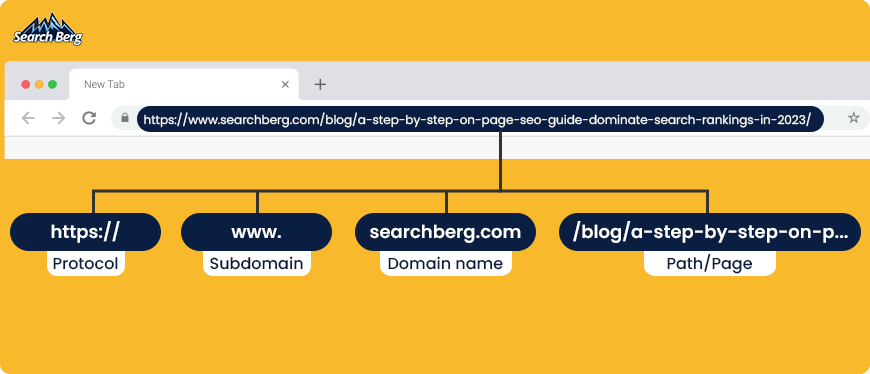
Your website’s URL structure plays a pivotal role in shaping user experience, helping search engines understand your content hierarchy, and contributing to your overall SEO strategy.
A well-organized URL structure acts as a roadmap for both users and search engines; it leads them to the information they seek with clarity and efficiency. It also communicates the topic of a page before users even click on the link.
For instance, a URL like “yourwebsite.com/recipes/healthy-breakfast-options” immediately tells users that the page contains content related to healthy breakfast recipes. This user-friendly approach helps visitors quickly determine the relevance of the page and encourages them to explore further.
Incorporating relevant keywords into your URLs can provide additional context to search engines and help with the ranking process. However, it’s important to strike a balance. While keywords can enhance SEO, avoid using overly long URLs with excessive keywords that appear cumbersome and confuse both users and search engines.
Try to keep the URLs concise and organized. They should comprise 3–5 words that convey the main topic of the page. Including hyphens between words enhances readability and ensures that URLs remain human-friendly. Creating a logical hierarchy in your URL structure (mirroring the content’s organization) helps search engines comprehend the relationships between different sections of your website.
Additionally, URL structure contributes to the user’s perception of your website’s professionalism and reliability. Well-structured URLs are more likely to be shared and clicked on.
When planning your URL structure, prioritize user experience. Aim for URLs that are easy to remember, type, and share. Avoid using complex strings of numbers or symbols that can confuse users and detract from the overall aesthetics of your website.
4.5. Heading Tags (H1, H2, H3, etc.)
Heading tags (represented as H1, H2, H3, and so on) are HTML elements that structure the content on a webpage. Think of them as the headings in a book or the titles in an outline; they provide a hierarchical organization that enhances readability and helps both users and search engines understand the content’s structure and importance.
The H1 tag represents the main heading of a page; it often describes the core topic. Search engines use the H1 tag to grasp the primary theme of the content. It’s essential for SEO and must contain relevant keywords that reflect the topic while providing a concise summary.
Subsequent heading tags (H2 and H3) offer a hierarchical breakdown of the content. They help divide the page into sections and subsections to make it easier for users to scan and locate specific information. Search engines also use these tags to comprehend the relationships between different sections of the content.
Take special care in maintaining a logical progression. The H1 tag represents the overarching topic of the page. H2 tags denote major sections.H3 tags can be employed within H2 sections to further divide content into subsections. This hierarchical approach creates a visual hierarchy that’s easy to understand and follow.
4.6. Internal Linking
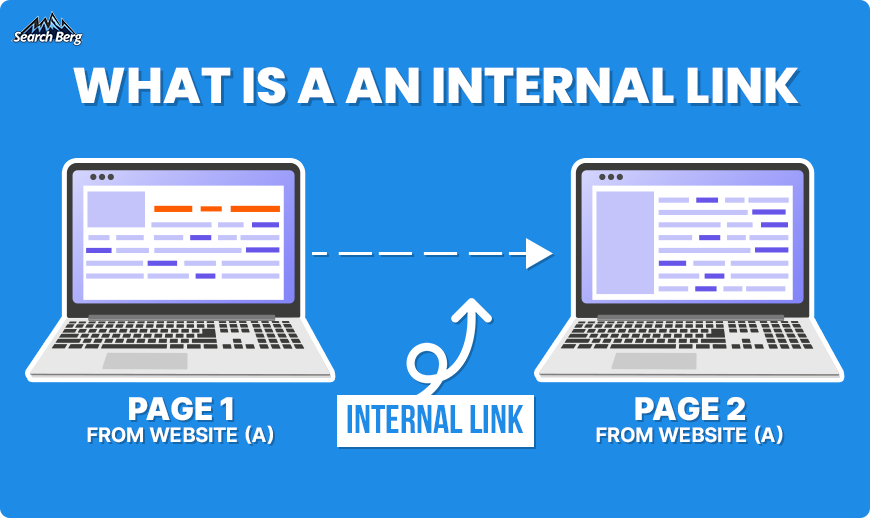
Internal linking is the practice of creating links within your own website that connect one page to another. These links serve as virtual pathways; they guide users from one piece of content to another within your domain.
Internal linking plays a pivotal role in enhancing your website’s overall structure, user experience, and search engine rankings.
Search engines view internal links as a signpost of content importance. When you strategically link to relevant pages within your site, you’re signaling to search engines that these pages hold valuable information related to the topic at hand. This interconnectedness strengthens your website’s authority and relevance in search engines’ eyes.
Internal linking also distributes “link equity” or “link juice” throughout your website. When you link from a high-authority page to another, some of that authority flows to the linked page. This can enhance the linked page’s ranking potential in search results.
Let’s jump to the optimization bit! For starters, ensure that the linked pages are contextually relevant to each other. The link should add value to the user’s experience and provide additional information on the same topic.
The text you use for the link, known as anchor text, should provide clear context about the linked page’s content. Descriptive anchor text aids both users and search engines in understanding the content’s focus. Explore the best practices for optimizing anchor text.
Always achieve balanced distribution; distribute internal links throughout your content but avoid overloading a page with excessive links. Prioritize user experience and natural integration. If you need a hand, sign up for SEO-friendly content writing services. SEO content writers are well-versed in the art of on-page SEO. Instead of simply creating power-packed content for you, they’ll also optimize it to achieve staggeringly high rankings!
It’s Time to Create SEO Content That Ranks
Google is flooded with content. The platform is home to 30–50 billion webpages. This fact is as upsetting is it is impressive. If you run a small-to-medium-sized business in 2023, you can’t stand out unless you bring out your A game. And that’s what we’re here for!
In this blog, we walked you through the best SEO content writing practices for higher rankings. Now that you’re equipped with foundational knowledge, it’s time to get to work!
At Search Berg, we provide professional SEO content writing services to help you engage your audience and claim the top Google SERP spots. We don’t want to leave you with a happy audience but an unhappy Googlebot. Nor do we want to appease Google but make your audience frown. By strategically checking both of these boxes off the list, we help you win with content.
Are you ready to start working with our SEO content writers? Let’s kick things off with a free consultation!












